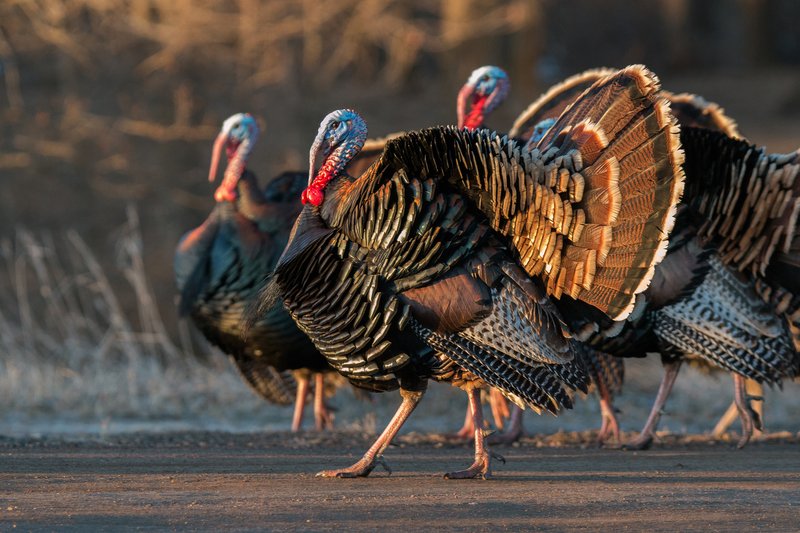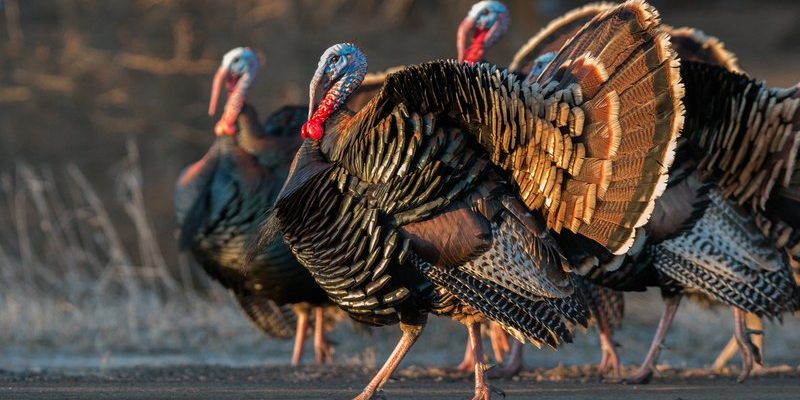
In this blog post, we’ll delve into the world of turkey vultures and explore how these birds have evolved and adapted to their surroundings over time. From their unique feeding habits to how they manage to stay cool in the heat, turkey vultures are truly remarkable survivors. Let me explain how these fascinating birds make the most of their environment and what we can learn from them.
Physical Adaptations of Turkey Vultures
When you look at a turkey vulture, you’ll notice its impressive wingspan, which can reach up to six feet. This long, broad wingspan is not just for show—it plays a crucial role in how these birds fly. Turkey vultures can soar high in the sky for hours without flapping their wings much. They use rising columns of warm air, called thermals, to stay aloft. This ability saves energy, allowing them to cover vast distances while searching for food.
Another physical adaptation you’ll notice is their unique bald head. Now, you might be wondering why they don’t have feathers on their heads. Well, in the turkey vulture’s world, a bald head is actually an advantage. When these birds eat carrion, or dead animals, having feathers can trap bacteria and rotting matter. A smooth, featherless head is much easier to keep clean, making it more efficient when it’s time to feast on their unusual meals.
Finally, let’s talk about their keen sense of smell. While many birds rely primarily on sight, turkey vultures have a remarkable sense of smell that helps them locate carcasses. They can detect the gases released by decaying animals from miles away. This olfactory prowess gives them a leg up in finding food before other scavengers can get there. It’s like having a special GPS for their meals!
Feeding Habits and Ecological Role
Turkey vultures play a crucial role in their ecosystems as scavengers. By eating dead animals, they help keep the environment clean and prevent the spread of disease. Imagine a world without these birds—carcasses would pile up, and the environment would suffer. Their scavenging habits ensure that nutrients are recycled back into the ecosystem, which is vital for various plant and animal life.
One noteworthy aspect of their feeding habits is the way they utilize their strong beaks and feet. Their beaks are perfectly designed for tearing through tough hides, while their feet, which are not as strong as those of other birds of prey, allow them to hop around and find food more easily. They might not win any speed contests, but turkey vultures are experts at precisely the task they were designed for.
Another interesting fact about their eating habits is that they have a highly acidic digestive system. This allows them to consume decaying meat without getting sick. While most animals would likely fall ill from the bacteria in rotting flesh, turkey vultures are perfectly equipped to handle it. This is just another way they’re adapted to survive in their specific niche.
Behavioral Adaptations
Beyond their physical traits, turkey vultures exhibit several behavioral adaptations that help them thrive. One of the most fascinating is their roosting behavior. Turkey vultures often roost in large groups, which can provide warmth and protection from predators. By coming together at night, they can share the heat generated by their bodies, making it easier to survive cooler temperatures.
You might also notice how turkey vultures are often seen with their wings spread wide while perched. This isn’t just a dramatic pose; they do this to help dry their wings after rain and to warm up in the morning sun. It’s like they’re sunbathing to kickstart their day! This behavior shows their connection to their environment and how they utilize the elements to their advantage.
Another intriguing behavioral adaptation is their territorial nature, especially during breeding season. Turkey vultures tend to be surprisingly quiet and unobtrusive, but they can become protective when necessary. If they sense a potential threat to their nest or young, they’ll use their height and flight skills to scare off intruders. This balance between being gentle scavengers and fierce protectors is a testament to their adaptability.
Temperature Regulation
Living in diverse habitats means that turkey vultures must adapt to various temperatures. These birds primarily inhabit warm regions, but they can be found in cooler areas, too. Their naked heads, as mentioned before, help them deal with extreme heat. By not having feathers, they can dissipate heat more efficiently and avoid overheating during those hot summer days.
In addition to their bald heads, turkey vultures have another fascinating trick up their sleeves—or wings, rather. They can regulate their body temperature by altering their posture. When they’re too warm, you might see them lift their wings slightly. This opens up more surface area and allows air to flow around their bodies, cooling them down quickly. Just think of it as a built-in air conditioner!
During colder months, these birds are known to migrate to warmer regions. They’re not just moving aimlessly; they have a clear sense of where to go. This migratory behavior shows how adaptable they are to seasonal changes. Instead of freezing in the cold, they fly south in search of food and a bit of sunshine.
Adaptability to Environmental Changes
One of the most impressive qualities of turkey vultures is their ability to adapt to environmental changes. For instance, as urban areas have expanded, turkey vultures have adjusted their feeding habits. They’ve learned to scavenge from landfills and roadsides, making the most of the food sources available in cities. This flexibility has allowed them to thrive despite human encroachment on their natural habitats.
You might also be surprised to hear that turkey vultures can adapt their nesting habits. In the wild, they would typically nest in rocky ledges or tree cavities. However, as habitats have changed, they’ve been known to nest in more urban settings, like abandoned buildings or bridges. It’s a testament to their resourcefulness—they can find a suitable spot to lay their eggs, regardless of the surroundings.
Climate change is another factor affecting turkey vultures. As temperatures shift and weather patterns alter, these birds are showing remarkable resilience. They’re adjusting their migration patterns and feeding locations in response to changes in their environments. Watching how nature adapts can be both humbling and inspiring, and turkey vultures are prime examples of this phenomenon.
When we take a closer look at how turkey vultures adapt to their environment, it’s hard not to appreciate their resilience and intelligence. These birds have evolved not just physically but behaviorally, making them incredibly versatile creatures. From their impressive wingspan to their remarkable scavenging abilities, turkey vultures remind us of nature’s ingenuity.
In a world where adaptability is key to survival, turkey vultures stand out as champions. They teach us lessons about making the most of our circumstances, whether it’s finding food in unexpected places or managing heat in creative ways. The next time you see a turkey vulture soaring above, take a moment to think about the incredible adaptations that allow it to thrive in its environment. It’s a beautiful reminder of the complex relationships between creatures and their habitats.

